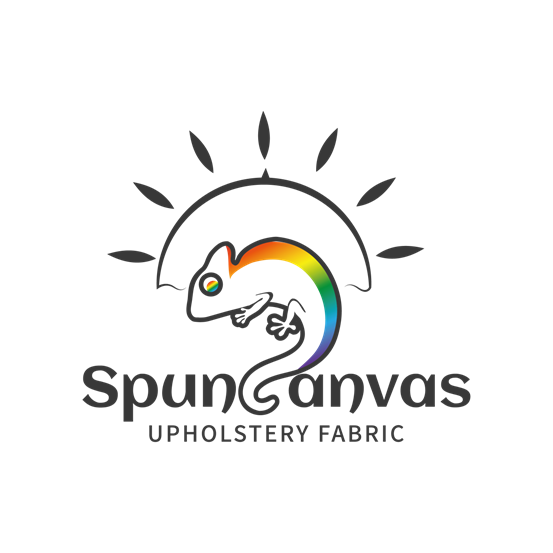Polypropylene fabric, often recognized for its exceptional durability, water resistance, and versatility, has become a staple in various industries, from outdoor furniture and apparel to automotive and medical applications. For Spuncrylic, a brand dedicated to crafting high-performance textile solutions, understanding the fundamental composition of polypropylene fabric is key to appreciating its unique properties and wide-ranging utility. So, what exactly is polypropylene fabric made of, and how does its molecular structure contribute to its remarkable characteristics?
The Building Blocks: Propylene Monomers
At its core, polypropylene fabric is derived from polypropylene (PP), a synthetic thermoplastic polymer. This polymer is produced through a process called addition polymerization, where thousands of small molecules called propylene monomers (C₃H₆) are linked together to form long, repeating chains. These long chains are the fundamental building blocks that give polypropylene its strength and flexibility.
Propylene itself is a byproduct of petroleum refining and natural gas processing. This makes polypropylene a cost-effective and abundant material, contributing to its widespread use across various sectors. The purity and consistency of these propylene monomers are crucial for producing high-quality polypropylene polymers, which in turn affect the performance of the final fabric.
From Polymer to Fiber: The Manufacturing Process
The journey from polypropylene polymer to fabric involves several key steps:
1. Polymerization
The first step is the polymerization of propylene monomers into polypropylene resin. This typically occurs in a reactor where propylene gas is subjected to specific temperature and pressure conditions in the presence of catalysts. The resulting polypropylene is usually in the form of pellets or granules.
2. Melting and Extrusion
These polypropylene pellets are then melted down at high temperatures. The molten polymer is then extruded through a spinneret, which is a device with many tiny holes. As the molten polymer is forced through these holes, it forms continuous filaments or fibers. The size and shape of these holes determine the denier (fineness) of the fibers, which can range from very fine for apparel to thicker for industrial applications.
3. Stretching (Drawing)
After extrusion, the newly formed fibers are stretched or
drawn. This stretching process aligns the polymer molecules within the fibers, increasing their strength, tenacity, and dimensional stability. The degree of stretching significantly impacts the final properties of the fiber.
4. Fabric Formation
Once the fibers are formed, they can be processed into various fabric structures:
•Woven Fabrics: For applications like outdoor furniture upholstery (where Spuncrylic excels), polypropylene fibers are woven together on looms to create durable and stable fabrics. The weaving pattern (e.g., plain weave, twill weave) influences the fabric's texture, strength, and appearance.
•Non-Woven Fabrics: In other applications, polypropylene fibers can be bonded together using heat, chemicals, or mechanical entanglement to form non-woven fabrics. These are commonly used in disposable products, medical textiles, and geotextiles.
•Knitted Fabrics: Polypropylene can also be knitted into fabrics, offering more stretch and flexibility, often used in activewear.
Spuncrylic's Commitment to Quality and Innovation
At Spuncrylic, our commitment to quality begins with the selection of premium polypropylene raw materials. We work closely with suppliers to ensure that the polypropylene polymers we use meet stringent standards for purity and consistency. This meticulous attention to detail at the foundational level allows us to produce fabrics with superior performance characteristics.
Furthermore, Spuncrylic continuously invests in research and development to innovate our manufacturing processes. We explore new extrusion techniques, fiber modifications, and fabric constructions to enhance the inherent properties of polypropylene. This includes developing fabrics with improved UV resistance, enhanced stain repellency, and optimized breathability, all while maintaining the core benefits of polypropylene.
The Advantages of Polypropylene Fabric
The unique composition and manufacturing process of polypropylene fabric contribute to its numerous advantages:
•Lightweight: Polypropylene is one of the lightest synthetic fibers, making it ideal for applications where weight is a concern.
•Hydrophobic: Its non-absorbent nature makes it highly resistant to water, mold, and mildew.
•Chemical Resistance: Polypropylene is resistant to a wide range of chemicals, acids, and alkalis.
•Durability: It exhibits excellent strength and abrasion resistance, ensuring longevity.
•Colorfastness: Since polypropylene can be solution-dyed (color added during the melting process), the color becomes an integral part of the fiber, leading to exceptional fade resistance.
•Recyclability: Polypropylene is a thermoplastic, meaning it can be melted and reprocessed, making it a more sustainable choice.
Conclusion: A Material Engineered for Performance
Polypropylene fabric is a testament to the power of polymer science and textile engineering. From its humble beginnings as propylene monomers, it transforms into a high-performance fabric through a sophisticated manufacturing process. Spuncrylic leverages this science to create fabrics that not only meet but exceed the demands of modern applications.
By understanding what polypropylene fabric is made of, consumers and industries can better appreciate its inherent strengths and make informed choices. Spuncrylic is proud to offer polypropylene fabric solutions that embody durability, innovation, and sustainability, providing reliable and high-quality textiles for a diverse range of needs.



